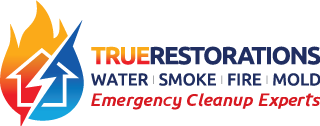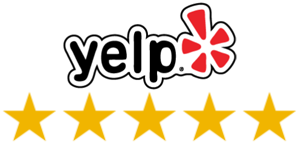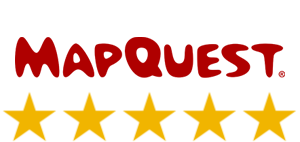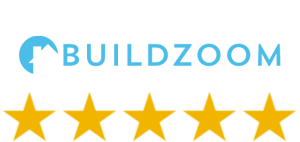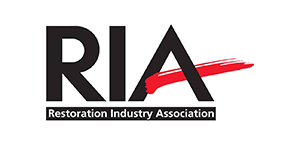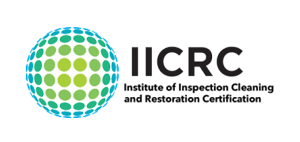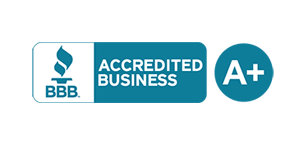24/7 Emergency Smoke Damage Cleanup
True Restorations in Suffolk County & Nassau County Long Island NY is a smoke damage restoration company that specializes Odor/Smoke Cleanup, Removal, and Home Deodorizing.
Truly, no dwelling or establishment is considered safe when it comes to smoke damage. Soot particles, invisible to the naked eye, can remain airborne for well over a week after a fire and can be inhaled by occupants which can cause ill health effects. One must put in mind that emergency restorations should be done immediately to prevent further damage to contents & interior finishes.
For smoke removal and odor cleanup, you are advised to consult a reliable restoration expert to address your current condition, True Restorations staff is IICRC trained for fire & smoke restoration services.
Smoke damage may happen due to fire, cigarettes, or cooking, it can ruin electronic appliances and its smoke odors linger overtime soaking into carpets, walls, and furnishings and other porous surfaces. The True Restoration’s team of experts is dedicated to solving these problems, through years of experience and research.
Smoke Removal & Cleanup Process
Step 1: Air Treatment & Removal Textiles & other sources of smoke smell
- Use of an Air Scrubber on a Soot or fire loss is imperative as it removes the air pollution from the environment. Air pollution can’t be seen with the naked eye.
- Particles also settle out at different rates, (visible dust takes 5 seconds, mites and fungal spores take 5 minutes, dander takes 10 hours, soot and gasses can take up to 10 days.
Activated carbon or charcoal filters should be used with an air scrubber to remove odor. Carbon and charcoal filters are one in the same as the terminology is based on the manufacturer selling the product.
Activated Carbon works by adsorption to remove gasses and odor causing fumes. 1 lbs of activated carbon has the surface area to treat the equivalent of 100 football fields. The carbon filters we use have 2.2 lbs of activated in them.
Removal & cleaning of textiles (clothing, drapes, bedding, etc.) will drastically lower the odor in the property and is the next step of the remediation / cleaning process.
Step 2: Clean and Deodorize Exposed Surfaces
Pre-cleaning with a HEPA vacuum with a brush head followed by either a dry or wet
cleaning method depending on the surfaces and the type of smoke or soot. Another step of pre-cleaning would be the cleaning of any HVAC system affected, which should be done prior to wipe down of any surfaces. Pre-cleaning with a HEPA vacuum reduces the particles that can be re-released into the air.
The next step is a wipe down with a dry chem sponge and / or wet cleaning with a degreaser to physically remove soot from the surface of the material. Dry cleaning with a soot or dry sponge will pull some soot out of the pores of porous materials. Chemical Odor neutralizers such as Odor X 9D9 can either be mixed with a wet cleaning solution or applied directly by a ULV fogger or pump sprayer.
Step 3: Neutralizing trapped smoke odors
- Ozone can damage, paint and rubber, create peroxide if water is present bleaching materials, and cause major health hazards as it is a strong respiratory irritant.
- Only use in vacant houses with no fish tanks and on a timer. Hydroxyl Ions – Hydroxyl generating machines operate much like an ozone machine as it works by oxidizing materials, however is much milder then ozone as it does not damage materials and does not pose a health hazard. Since it is a milder machine, it takes days to do what ozone does in hours.
- Hydroxyl machines require humidity to work as it uses water molecules to create hydroxyl Ions.
- Some Hydroxyl machines create small amounts of ozone Crystal Odor Counteractant (COC) and Thermal fogging – COC and thermal fogging work in conjunction with each other.
- COC is an odor absorbing crystal which helps neutralize certain types of odor causing gasses by the process of adsorption much like activated carbon. The difference being that COC use a time release evaporative control agent into the air where it attaches to the odor causing molecule to neutralize it. 4 ounces controls 200 Sf of area.
- Thermal fogging takes a liquid with odor neutralizing capabilities and effectively evaporates it into a smoke like fog. This fog acts just like smoke from a fire and pushes its way into all the cracks and crevasses that were unable to be cleaned by hand. This fog works by adsorption attaching to the odor molecules and neutralizing them. Some thermal foggers use a gas burning flame to work and should only be used in unoccupied fully gutted houses. 2 people should be working together for 1 thermal fogging job. 1 person to operate the fogger and 1 person to guide the other out of the room as the fog will inhibit vision. Some thermal foggers can ignite drapes, carpet, or contents if too close, this process is done with great care. The local fire department will be notified prior to commencing fogging as the structure will be filled with this fog and often times gives the appearance of a fire.
Step 4: Encapsulation, Seal surfaces
After all the cleaning is completed and the air pollution is reduced, the final stage is to encapsulate the remaining structure by use of fire or odor rated sealers. This step seals off all the pores of the materials effectively locking any remaining odor causing molecules that have not been neutralized into the material. This sealer can be sprayed or painted onto a surface with a brush or roller.
It is important to note that this is the final step of the cleaning process and at no time should any previous steps be skipped prior to this step. Encapsulation only works if there is a small amount of remaining odors molecules left behind after the cleaning process. The reason for this is expansion and contraction of materials based on the environment. As materials get exposed to heat or moisture they expand exposing the pores of the material and heavy odors can still escape if the previous steps are not completed ( a job completed in January with no odor may have an odor reappear in August if the process is not followed).
We work with your insurance company for you.
Treating a smoke affected structure is not a job for a homeowner/laymen or even an ordinary contractor. We, as an expert in smoke damage restoration, help our clients start a smoke insurance claim and guide them all through the process. Using Xactimate estimating program, we utilize same estimating database applied by most insurance providers. By using this program, it allows us to communicate directly with your insurance company on your behalf and come to an acceptable insurance payout which eliminates additional costs for our clients.
Do's
Things you should do if you experience smoke damage
- DO– ensure the HVAC system is shut off
- DO– open windows & doors to release trapped smoke if weather conditions allow
- DO- empty you refrigerator, freezer and cabinets of all perishable items.
Don'ts
Things you SHOULDN’T do if you experience smoke damage
- DON’T do anything until you document the extent of the smoke & soot infiltration.
- DON’T– attempt to exhaust any smoke through your HVAC system or whole house fan.
- DON’T– attempt to clean any wall surfaces, garments, upholstery, carpets and appliances without consulting a True Restorations professional. Improper cleaning techniques may cause further damage.
- DON’T – consume any foods exposed to smoke
- DON’T – use any makeup or topically applied ointments exposed to smoke
